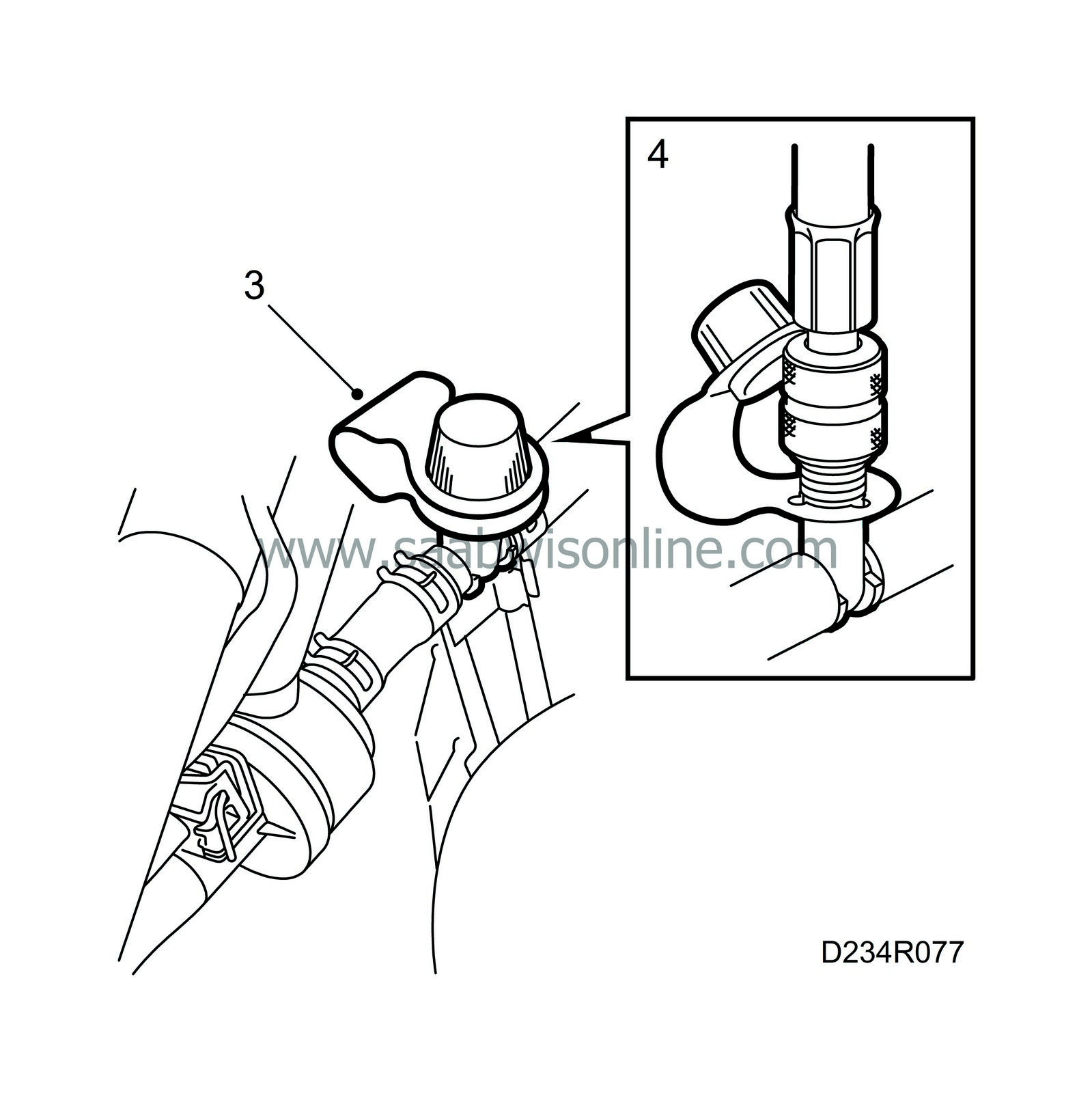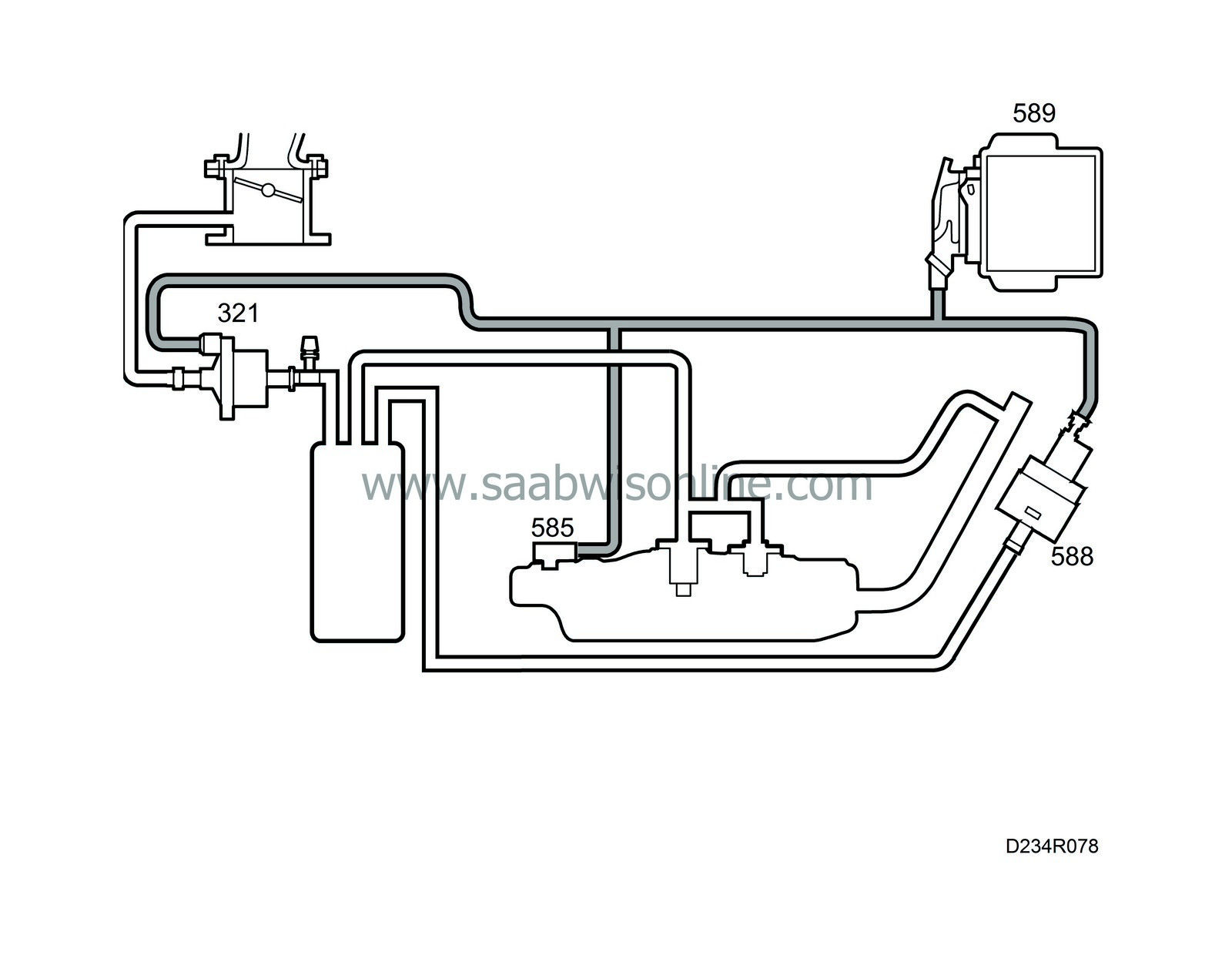Checking for leaks in the evaporative emission system
|
|
Checking for leaks in the evaporative emission system
|
|
1.
|
The shut-off valve must still be activated.
|
|
2.
|
Detach the line from the purge valve on the intake manifold.
|
|
3.
|
Pressurize the system further as described in the Kent-Moore instruction manual.
|
|
4.
|
Detect the leak with the Ultrasonic Leak Detector J41416. Start from the line detached from the intake manifold and work through the lines and components in the system. Perform a visual inspection at the same time.
|
Note
|
|
It may be necessary to lower the tank slightly to be able to check for possible leaks in the components on top of the tank.
|
|
Note
|
|
The ultrasonic leak detector is sensitive to ambient noise such as exhaust extractors, pneumatic machines, air nozzles, leaking pneumatic connections, etc.
|
|
The workshop ventilation system can create currents of air that can also affect the equipment.
|
|
Everything mentioned above can cause a similar, but incorrect, result/detection as a leaking EVAP system.
|
|
|
5.
|
Adjust the sensitivity of the detector to filter out ambient, in many cases, interfering noise.
|
Note
|
|
Major leaks such as a defective shut-off valve or loose hose are difficult to detect as they do not have the ”right sound” to be detected by the ultrasonic leak detector.
|
|
Therefore, it is important to perform a visual inspection and component check of the system if there is a very quiet leak.
|
|
|
6.
|
When the leak has been detected and rectified, check the integrity of the system again.
|
|
7.
|
Restore the care to its original state.
|

 .
.




